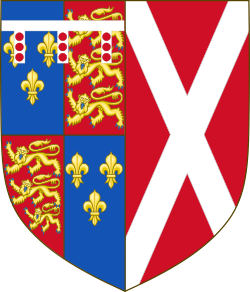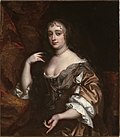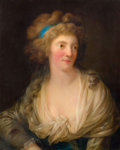| Person | Name | Coat of Arms | Birth | Marriage | Became Duchess of York | Spouse | Change in style | Death |
|---|
 | Infanta Isabella of Castile [1] [2] | | 1355 | 11 July 1372 | 6 August 1385 | Edmund of Langley | 23 December 1392 |
| Lady Joan Holland [1] [2] | | 1380 | 4 November 1393 | 1 August 1402
Husband's death;
became Dowager Duchess of York | 12 April 1434 |
 | The Honourable Philippa de Mohun [1] [2] | | | before 7 October 1398 | 1 August 1402 | Edward of Norwich | 25 October 1415
Husband's death;
became Dowager Duchess of York | 17 July 1431 |
 | Lady Cecily Neville [1] [2] |  | 3 May 1415 | October 1429 (or earlier) | Richard Plantagenet | 30 December 1460
Husband's death;
became Dowager Duchess of York | 31 May 1495 |
| Lady Anne de Mowbray [1] [2] | | 10 December 1472 | 15 January 1478 | Richard of Shrewsbury | 19 November 1481 |
 | Lady Anne Hyde [1] [2] |  | 12 March 1637 | 3 September 1660 | James Stuart | 31 March 1671 |
 | Princess Mary of Modena [1] [2] | | 5 October 1658 | 21 November 1673 | 6 February 1685
Husband acceded to throne as James II;
became queen consort | 7 May 1718 |
 | Princess Frederica Charlotte of Prussia [1] [2] | | 7 May 1767 | 29 September 1791 | Prince Frederick | 6 August 1820 |
 | Princess Victoria Mary of Teck [1] |  | 26 May 1867 | 6 July 1893 | Prince George | 6 May 1910
Husband acceded to throne as George V;
became queen consort | 24 March 1953 |
 | Lady Elizabeth Bowes-Lyon |  | 4 August 1900 | 26 April 1923 | Prince Albert | 11 December 1936
Husband acceded to throne as George VI;
became queen consort | 30 March 2002 |
 | Sarah Ferguson |  | 15 October 1959 | 23 July 1986 | Prince Andrew | 30 May 1996
Divorced;
assumed the style of Sarah, Duchess of York;
17 October 2025
ceased using courtesy title of Duchess of York upon Prince Andrew relinquishing his use of the title. Styled as Sarah Ferguson [3] [4] | |
|













